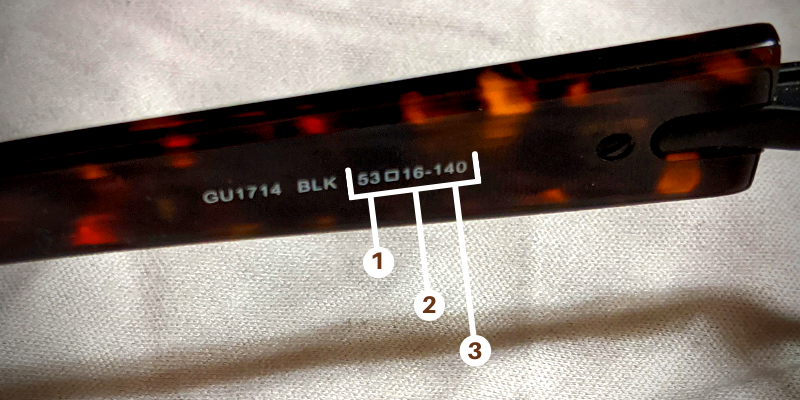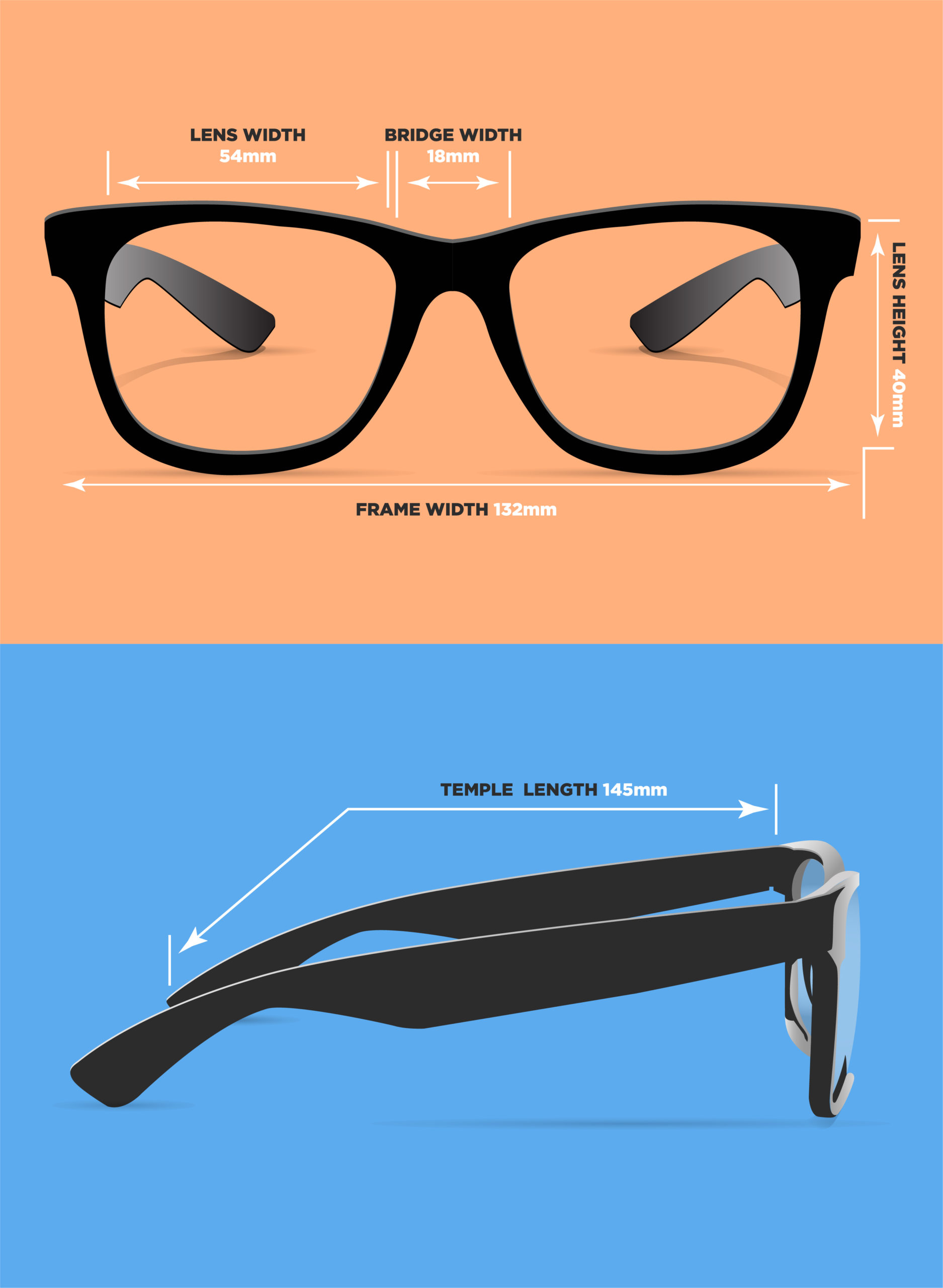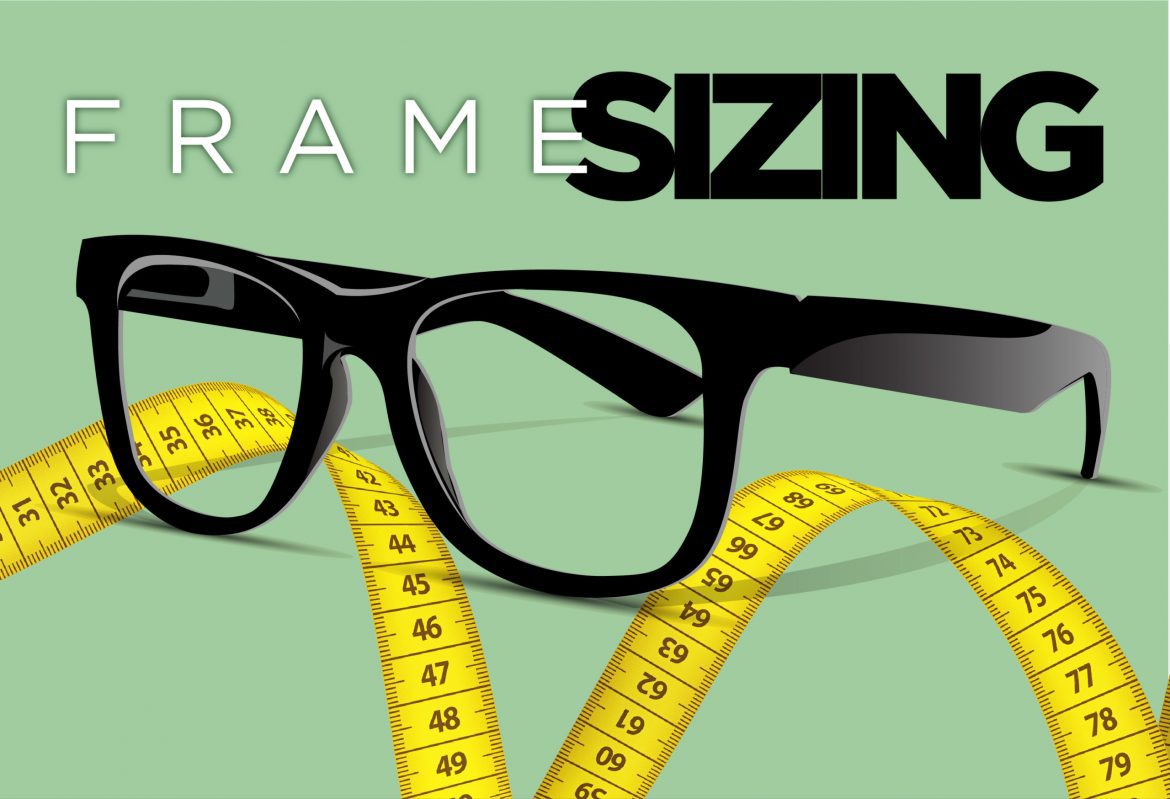38478 total views , 20 views today
In an optometry shop, you’re bound to get advice from an optician regarding the fit of your eyeglasses. When you shop online to enjoy a larger selection and lower prices, it’s helpful to understand the nuances of fitting eyeglasses.
It’s actually very simple. Three numbers reveal the size of your eyeglasses. The numbers indicate:
- Lens width (two digits)
- Bridge width (two digits)
- Temple length (three digits)
Where to find the measurements of the glasses
Do you have a pair of eyeglasses or sunglasses that you wear (and fit you well) handy?

Look closely at the numbers printed or inscribed on the insides of the temples (or arms) of the glasses. You’re likely to find information specific to the manufacturer brand and model, but should also see a sequence of three numbers that looks something like this (per the image above):
53 16 – 140
Again, these numbers refer to:
- lens width
- bridge width
- temple length
Each is measured in millimeters.
If you already have glasses that fit you well, you’re off to a great start. You can shop by size, looking for the same size, or thereabout. We say “thereabout” because it’s unlikely a few millimeters one way or the other will drastically affect your fit. And, fit can be a bit subjective. For instance, if you favor cat-eye frames, your frame width can be wider than your temples.
Does frame width matter?
Frame width, the total width of your frames, matters most. The idea is to get frames that work well—both visually and aesthetically—with the width of your face.
If your frames are too narrow, it will make your face look wider. Conversely, a frame that’s too wide will make your face look narrower.
(Here’s our guide to choosing eyeglass frames based on your face shape—and more.)
Here’s the rub regarding frame width: it won’t be one of the numbers you find while ordering your glasses or inscribed on glasses you own.
However, if you must know the frame width (and you really don’t), you can easily calculate it.
Lens width (x 2)
+
bridge width
+
the widths of the part of the frame or hinge pieces
that extend beyond the lens (x2)
Really, all you need is to keep in mind, you probably don’t want to go a lot higher or lower than glasses that you know fit you well. The general idea is to find frames where the width align with the widest part of your face at your temples.
The lens width will be the most telling factor, of course, but you need not insist on a specific lens width. Confused? The following graphic should be helpful.

Does lens height matter?
Yes and no. Lens height is dictated by the style you choose. For instance, round frames are bound to have a larger lens height than rectangular frames. If you’re not getting multifocal lenses (bifocals or progressives), simply make your selection based on your tastes.
However, if you are getting multifocal lenses, it’s important to order glasses with a lens height of at least 30 mm. The vertical space is necessary for the prescription to be effective and accommodate the multiple focus zones.
Note that (1) you won’t find lens height indicated on your glasses and (2) you may or may not find the number on the page you’re ordering from. So consider the following if the frame height is not indicated by the frame manufacturer:
- Look for an indication your frames will work for progressive/multi-focal prescriptions, or…
- Inquire via chat, email or phone to confirm the frames will accommodate your prescription.
Does bridge width matter?
The bridge of your frames is where it rests on your nose. Bridge width is the measurement of the shortest distance between the inside of the lenses.
Bridge width matters in that it’s a part of your frame width, however, bridge widths don’t vary all that much. They tend to range from 14 mm to 24mm, usually less (so the difference is relatively small).
Unless you have a very thin, or very wide nose, bridge width does not need to be an important part of your frame selection process—especially if your frames have adjustable nose pads.
Does temple length matter?
The temples of your frames should fit around your ears securely and comfortably. You should be able to shake your head without your glasses sliding down your nose.
However, temple lengths also don’t vary all that much. They’re commonly offered in 5 mm increments: 135, 140, 145 and 150 mm. You may have some wiggle room. For instance, if you find frames you like and they’re only offered with 145 mm temples, but you’re used to 140 mm, you may not notice any difference.
For a perfect fit, your temples will extend straight back to your ears and only touch the side of your head just in front of your ears. If they’re too short and curve too early, the frames may get pushed down your nose and be uncomfortable.
What about pupillary distance?
Pupillary distance (PD)—the distance between your pupils, as measured in millimeters—is very important. PD must be measured and applied accurately for the glasses to be effective.
However, PD is not a function of your frames. It factors into the production of your lenses. We discuss PD as is relates to ordering your lenses here and explain how to measure it here. Also, remember to ask your optometrist’s office to provide your PD. Some may not volunteer the information because you only need to know your PD if you’re buying online.
The goal is to create a sense of balance
Eyeglasses that fit your face well will create a sense of visual balance. Your glasses should sit in the middle of your face without going above your eyebrows. Again, and most importantly, the total width of your frames should match the width of your face at the temples.


